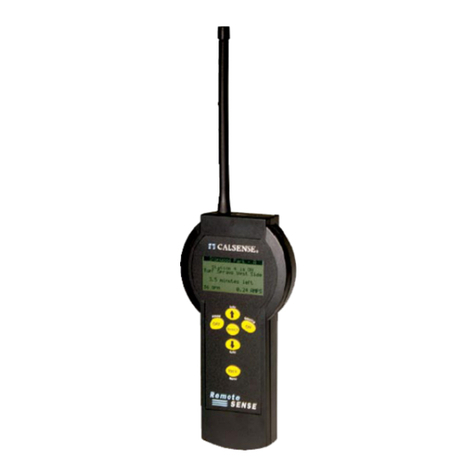
FLOW METER INSTALLATION ®
making
FLOW METER
GENERAL
The accuracy of flow measurement for all flow
measuring devices is highly dependent on proper
location of the sensor in the piping system. Irregular
flow velocity profiles caused by valves, fittings, pipe
bends, etc. can lead to inaccurate overall flow rate
indications even though local flow velocity
measurement may be accurate. A sensor located in
the pipe where it can be affected by air bubbles,
floating debris, or sediment may not achieve full
accuracy and could be damaged. Calsense flow
sensors are designed to operate reliably under
adverse conditions, but the following
recommendations should be followed to ensure
maximum system accuracy:
•Choose a location along the pipe where 10
pipe diameters upstream and 5 pipe
diameters downstream of the sensor provide
no flow disturbance. Pipe bends, valves,
other fittings, pipe enlargements and
reductions should not be present in this
length of pipe.
•The preferred location around the
circumference of a horizontal pipe is on top.
If trapped air or debris will interfere, then the
sensor should be located further around the
pipe from the top but not more than 45
degrees from top dead center. The sensor
should never be located at the bottom of the
pipe, as sediment may collect there.
Locations off top dead center cause the
impeller friction to increase, which may
affect performance at low flow rates. Any
circumferential location is correct for
installation in vertical pipes.
•Alignment of the sensor to ensure that
impeller rotation is parallel to flow is
important.
PHYSICAL INSTALLATION
•The Flow meter is installed after the water
meter or backflow device.
•The Master Valve can be installed on either
side of the Flow Meter.
•The mainline pipe is usually sized down
during the installation to accommodate the
fitting of the Flow Meter.
•Note the intended direction of the flow as
indicated by an arrow on top of the Flow
Meter.
•There must be free, unrestricted pipe of the
same size as the Flow Meter, with a length
of at least 10 times the flow meter size
upstream, and 5 times the flow meter size
downstream of the Flow Meter tee. This
should apply to distance from any valve,
fitting, meter, or backflow device.
•The Flow Meter shall be easily accessible,
housed in a rectangular valve box, and
marked ‘FM’.
•There should be 8” of pea gravel beneath
the Flow Meter in the valve box.
•Maximum Wire length should not exceed
2000 feet..



























